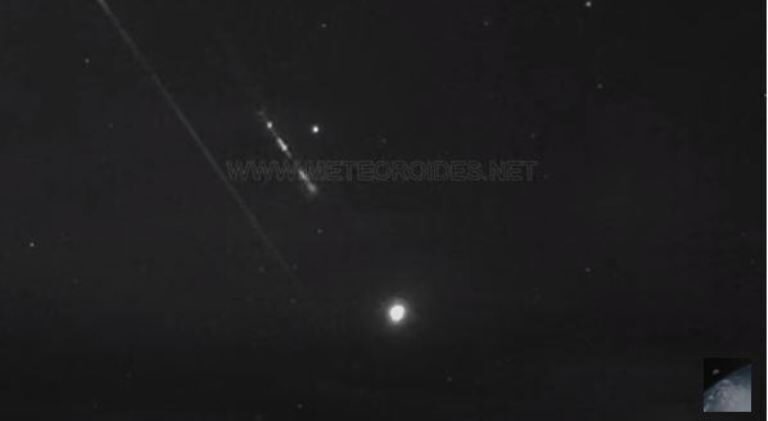On Sunday, November 8, at exactly 18 hours 11 minutes and 2 seconds of Central European time, a meteoroid weighing approximately 20 kilograms entered the Earth's atmosphere and began to shine at an altitude of 88 km above Hejnice in the Jizera Mountains. At that time, the body was moving at a speed of 16 km / s and along a very steep path inclined to the earth's surface of 77 degrees, it continued to fly in a southeasterly direction and gradually brightened.
The maximum brightness, which corresponded to the brightness of the full moon, was reached by the bolide in a short brightness at an altitude of 33 km. At this stage of the flight, the meteoroid also braked sharply in the atmosphere and also disintegrated. He flew the entire 70 km long light track in 5 seconds and extinguished at a height of only 20 km above the southern part of the Jizera Mountains. One larger fragment and several small fragments, of the order of ten gram and gram, could have landed on the earth's surface. Before the collision with the Earth, the meteoroid orbited the Sun in a slightly eccentric orbit, which was inclined less than 20 degrees to the plane of the ecliptic, ie the plane of the Earth's orbit. In the sun, the meteoroid was only slightly closer to the Sun than the Earth's orbit, and in the sun it was only slightly behind the orbit of Mars.
Most likely it was part of an asteroid originating from the inner part of the main asteroid belt. Photo: Excerpt from an all-sky image of a car from November 8, 2020 taken by an automatic digital car camera of the Czech car network at a site on the premises of the Secondary School of Economics and Forestry in Frýdlant in the Czech Republic. Interruption of the light trail of the car (16 times per second) is caused by an electronic screen and allows us to determine the speed of the car (photo: Astronomical Institute of the ASCR).

